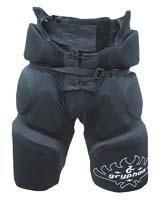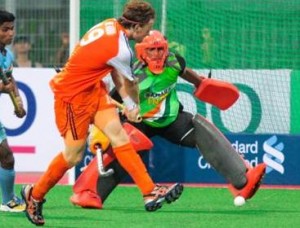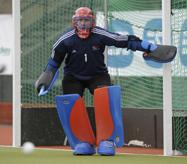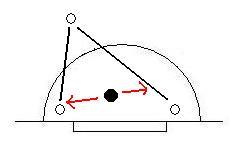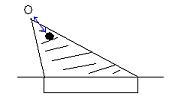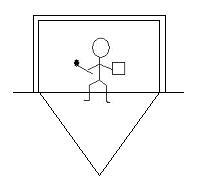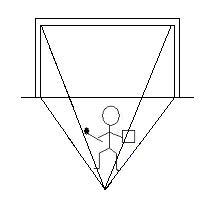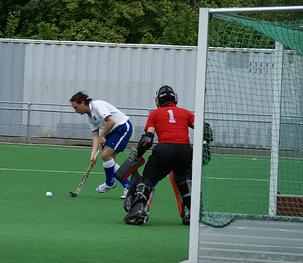Lateral movement (side to side) is the key area of movement around the circle. Think of your movement area as a mini semi-circle of the larger D you play in; this is the space you need to cover to protect your goal. By moving sideways, you can change your angle against the opposition; moving across to deal with the new attacker as the pass is made.
Shuffles
Shuffling is the essential form of movement for a goalkeeper to move across the face of goal. If you watch soccer goalkeepers, the move is very similar; basically, it is sidestepping across to the side you wish to move to. When pushing across from the pushing foot (depending on your left or right direction), make sure your keep in your ready stance, holding your hands up ready for a shot.
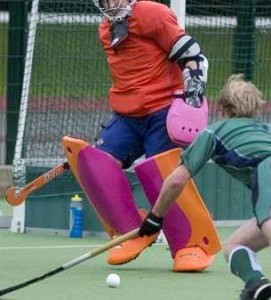

The following diagram illustrates the shuffle off the right foot moving to the right (the shuffle is a sideways movement, with you moving left or right to move into the space to your side):

Closing holes
With the shuffle opening up a large space between the open legs when moving, a lot of keepers (up to the pros; Stephen Lambert is a good example, and you could find footage of him actively doing this, playing for Australia in the recent Olympics). This closing off of open space when moving makes sure you have no space showing, in case of a shot; when facing a screen or in-close action when facing goal mouth scrambles, or when facing a deflection as you move across goal – more important in higher levels when shooters like to go for this area, as it is easy to expose.
When pushing across, lead the back leg into the lead leg, in order to close gaps by pushing to lock the pads together, or be as close as possible to block. This extra coverage against shots, with the security of no gaps. However, comes at the cost of movement (since it slows you down when moving to force your legs together, which can be costly when moving with speed against the play is vital). So if you’ve got to dash across the D to get back into space, then you have to balance the importance of speed, by ignoring the need to cover gaps and sacrifice coverage for extra movement.

